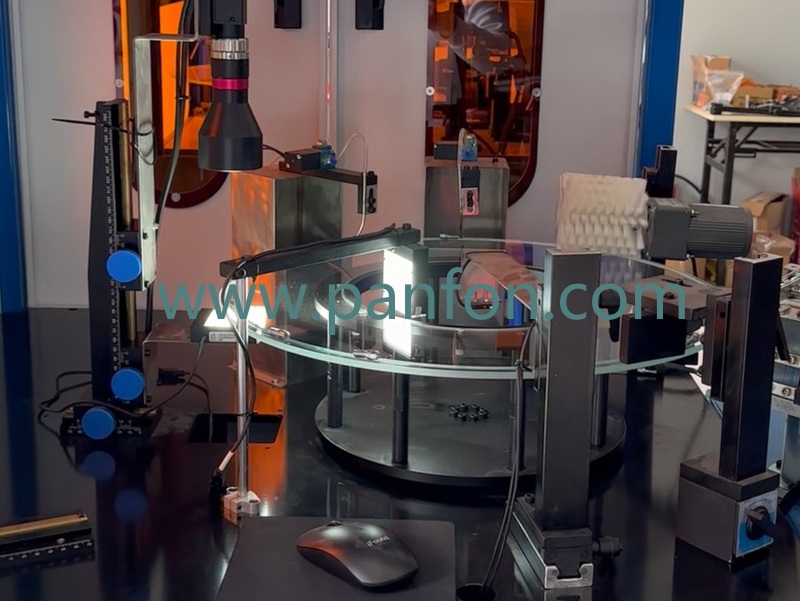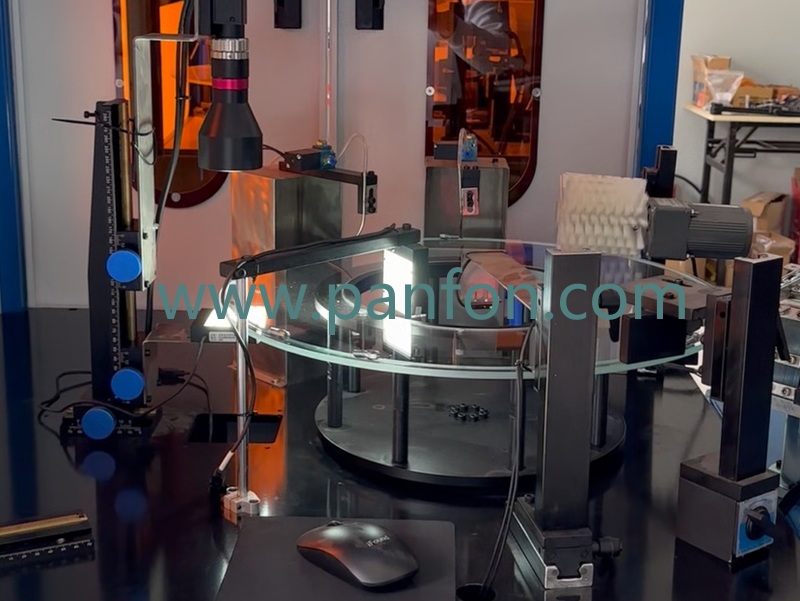Description
Hose Clamp 7.9mm Hexagonal Slotted Screw Sorting Machine
Our 7.9mm Hexagonal Slotted Hose Clamp Screw Sorting Machine is a specialized automated device designed for sorting screws used in hose clamps.

Customized 7.9mm Hexagonal Slotted Hose Clamp Screw Sorting Machine
Specifically, the slotted Hose Clamp Screw Sorting Machine has two key features: A hexagonal (6-sided) head and a slotted (straight-groove) top (requiring a flathead screwdriver for operation), with a critical dimension of 7.9mm (typically referring to the screw’s diameter or the distance across the hexagonal head).
The core function of Hose Clamp Screw Sorting Machine is to efficiently separate, organize, or inspect these specific screws—ensuring they meet size and head-type standards—for subsequent assembly into hose clamps (components used to secure hoses in mechanical, automotive, or plumbing systems).
Our hose clamp screw sorting machine streamlines production by reducing manual sorting errors and boosting efficiency.
Working Principle of Screw Sorting Machines
This Hose Clamp Screw Sorting Machine are automated devices designed to efficiently separate, classify, and inspect screws based on predefined criteria (e.g., size, head type, length, thread pitch, or surface quality). Their operation relies on a sequential combination of feeding, orientation, detection, sorting, and collection mechanisms, ensuring high accuracy and speed for industrial production needs.
Screw Feeding: Uniform Material Supply
The process starts with a hopper (a large storage container) that holds unsorted screws in bulk. To prevent jamming and ensure a steady flow, the hopper is often equipped with:
- Vibratory bases: Gentle vibrations loosen clustered screws and guide them toward a narrow outlet.
- Agitators (optional): Rotating or oscillating parts break up tight screw clumps, especially for small or irregularly shaped screws.
From the hopper, hose clamp screws are fed into a conveyor system (e.g., a narrow belt conveyor or a vibratory track) that transports them to the next stage at a controlled speed.
Orientation: Aligning Screws for Detection
Most detection and sorting steps require screws to be in a consistent orientation (e.g., all heads facing upward, or all shafts aligned in the same direction). This is achieved via orientation mechanisms, which vary by screw type:
- Vibratory tracks with guide rails: For small screws (e.g., machine screws), the track’s shape (e.g., V-groove) and side rails force screws to align with their shafts parallel to the track direction.
- Rotary discs with pockets: A rotating disc has small, screw-shaped pockets; only screws that fit into the pockets (in the correct orientation) are carried forward, while misaligned ones fall back to the hopper for reprocessing.
- Air jets or mechanical fingers: For larger screws, targeted air blasts or small mechanical arms nudge misaligned screws into the correct position.
Detection & Inspection: Identifying Target Criteria
This stage uses sensors and imaging systems to “inspect” each screw and compare it against the desired specifications. Common detection technologies include:
- Optical sensors/cameras: High-resolution cameras capture images of each screw, which are analyzed by software to check:
-Head type (e.g., hexagonal, slotted, Phillips, Torx).
-Dimensions (e.g., diameter, length, head width—e.g., 7.9mm for hexagonal heads).
-Surface defects (e.g., scratches, rust, missing threads). - Laser sensors: Measure precise dimensions (e.g., thread pitch or shaft straightness) by detecting how laser beams reflect off the screw’s surface.
- Magnetic sensors: Identify magnetic vs. non-magnetic screws (e.g., steel vs. aluminum) by detecting magnetic permeability.
- Weight sensors: For bulk sorting, load cells measure the weight of small batches of screws to separate different sizes (since weight correlates with size for uniform materials).
The system instantly classifies each screw as “acceptable” (meets specs) or “reject” (fails, e.g., wrong size, damaged thread).
Sorting: Separating Acceptable vs. Rejected Screws
Based on the detection results, the Hose Clamp Screw Sorting Machine uses fast-acting mechanisms to divert screws into separate channels:
- Air jets: When a “reject” screw is detected, a solenoid valve triggers a short burst of compressed air, blowing the screw into a “reject bin.” Acceptable screws continue along the main path.
- Mechanical diverters: Small flaps or gates pivot quickly to redirect screws—one gate for acceptable screws (to the “collection bin”) and another for rejects.
- Conveyor branching: The main conveyor splits into multiple sub-conveyors, each dedicated to a specific screw type (e.g., one for 7.9mm hexagonal slotted screws, another for 5mm Phillips screws).
Collection: Storing Sorted Screws
Finally, sorted screws are collected in designated bins, hoppers, or packaging systems:
- Acceptable screws are sent to bins connected to assembly lines (for immediate use) or to packaging stations (e.g., for bagging or boxed storage).
- Rejected screws are collected in a separate bin for manual re-inspection (if salvageable) or disposal.
 +8613906047998
+8613906047998